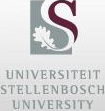When addressing social issues such as inequality, the climate crisis, or systemic injustices, conventional research methods can fall short of delivering real-world impact. This is where participation and transdisciplinary research step in, not only as buzzwords, but as necessary shifts in how we understand and produce knowledge.
At a recent Public Squares lecture, Professor Lynn Hendricks of Stellenbosch University’s Department of Global Health unpacked participation in research and its crucial role in shaping effective transdisciplinary research practices.
From research on communities to research with communities
Participation in research flips the traditional research process on its head. Instead of viewing community members as passive subjects, it brings them into the heart of inquiry as co-designers, co-producers and co-translators of knowledge. This approach is especially important in health research, where lived experience offers insights that academic theory cannot.
"Participation should not be an add-on in research,” Hendricks emphasised, “rather, it is foundational for ethical and impactful work, especially when addressing the complex ‘wicked problems’ of our time.”
What makes research transdisciplinary?
Transdisciplinary research does more than bring different academic fields together. It actively integrates non-academic voices such as those of community members, artists and policymakers to generate knowledge that is inclusive, relevant, actionable, and transformative. It is:
Problem-driven: Tackling multifaceted issues like inequality and poverty.
Co-produced: Built on genuine collaboration with stakeholders throughout all stages of research, from framing questions to disseminating findings.
Inclusive: Recognising and integrating different ways of knowing, beyond traditional scientific norms.
This method calls for humility, reflection, and adaptability from researchers; qualities often overlooked in traditional academic training.
Key methods for meaningful participation
Through her work at Stellenbosch University and with the Public Squares Initiative, Prof. Hendricks and her colleagues have identified several techniques that bring non-academic individuals into the heart of research and knowledge production. These include:
Creative methods such as digital storytelling and participatory theatre performances to amplify community narratives.
Qualitative research methods that are culturally and context-sensitive, including focus groups, ethnographic observation, and narrative analysis.
Technological tools that allow broader, more accessible participation, such as mobile surveys and virtual collaboration platforms.
Such tools not only make the research process inclusive but also ensure that findings are grounded in the realities of those most affected.
The benefits and challenges
While the benefits of participatory and transdisciplinary research are many such as inclusivity, capacity building, and more sustainable and relevant solutions, challenges still loom. Power imbalances within academia, lack of institutional support, funding constraints and communication barriers can hinder the process of authentic participation.
“It’s not enough to invite communities into research,” Prof. Hendricks noted. “We have to change the structures that determine whose knowledge counts.”
Lessons for the future of participation in research
Drawing from various collaborative projects, Prof. Hendricks offered four key lessons for researchers to ensure that community participation in the research is authentic and ethical:
Partnerships between researchers and communities are essential not just at the start, but throughout the research process.
Participatory methods should improve the relevance of findings, especially for communities involved
Technology and the arts can bridge the gap between academia and community.
Institutional change is necessary to scale inclusive research models and ensure that the voices of the vulnerable and marginalised are prioritised.
As Prof. Hendricks succinctly said: “Unconventional problems require unconventional approaches.”
Watch Professor Lynn Hendricks’ full lecture here
Photo by: The Dollie House

